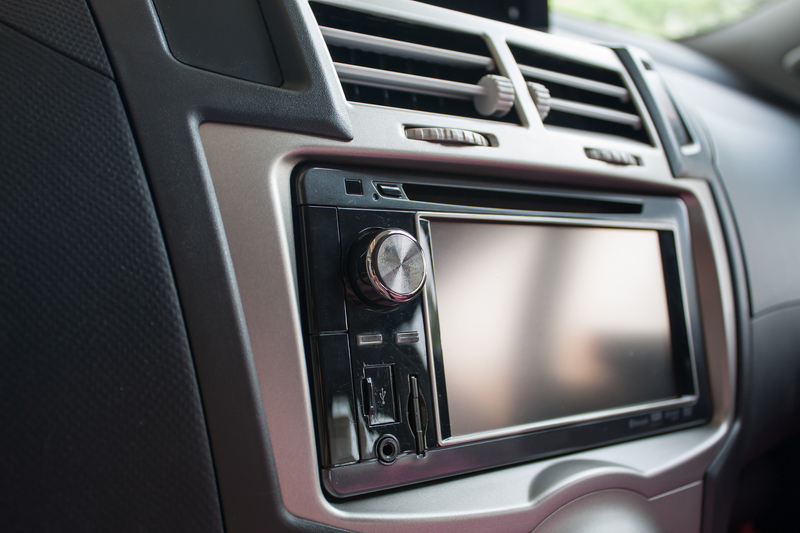Protecting Your Sofa: Essential Long-Term Storage Tips
Posted on 30/05/2025
Protecting Your Sofa: Essential Long-Term Storage Tips
Looking for the best ways to preserve your couch while it's not in use? Discover expert strategies for protecting your sofa in long-term storage and ensure it remains in top condition for years to come.

Why Proper Sofa Storage is Crucial
Your sofa is more than just a piece of furniture; it's an investment that adds comfort and style to your living space. When circumstances require you to store your couch for an extended period--be it during a relocation, renovations, or seasonal changes--proper preservation techniques are vital. Without comprehensive care, your cherished seating can suffer from damage like mold, mildew, stains, and even structural weakness. By adopting advanced sofa protection methods, you can avoid costly repairs and replacements.
Preparing Your Sofa for Long-Term Storage
1. Begin with a Deep, Thorough Cleaning
The foundation of effective sofa storage begins with meticulous cleaning. Dust, crumbs, and hair can create breeding grounds for pests or fungi over time. For optimal results:
- Vacuum all surfaces, including beneath cushions and along seams. Use an upholstery attachment for deep cleaning.
- Spot Clean Stains using appropriate cleansers for your sofa's material (leather, fabric, microfiber).
- Deodorize with baking soda or specialized fabric sprays to eliminate lingering smells.
- Allow to Dry completely to prevent moisture buildup that can lead to mold or mildew.
Never store your sofa while it is damp! This is the most common cause of irreversible mildew damage.
2. Disassemble If Possible
Consider taking your sofa apart to maximize protection and save space during storage. Remove legs, cushions, or modular sections as designed by the manufacturer. Store small parts in labeled bags.
- Taking apart the sofa allows each piece to be wrapped and protected, minimizing friction and pressure damage.
- Use original packaging or wrap each part separately in protective material.
3. Carefully Wrap and Cover for Protection
Using proper packing materials is essential for sofa preservation in storage units:
- Wrap the entire sofa in soft, breathable fabrics like cotton sheets or moving blankets.
- Avoid direct contact with plastic, especially for leather furniture, as it can trap moisture and cause cracking.
- If you must use plastic wrap, opt for breathable furniture covers or perforated wraps designed for long-term storage.
- Make sure all openings are sealed with packing tape, but do not wrap so tightly that you risk deforming the structure.
For extra protection, consider using silica gel packets or moisture absorbers inside cushion storage bags.
Choosing the Right Storage Facility for Sofa Protection
1. Seek a Climate-Controlled Storage Unit
Humidity and temperature fluctuations are your sofa's greatest enemies during long-term storage. Choosing a climate-controlled facility is paramount if you want to avoid mold, mildew, fabric deterioration, and wood warping.
- A climate-controlled unit maintains steady temperature and humidity levels, ideal for both fabric and leather sofas.
- Look for facilities offering 24/7 monitoring, as sudden climate events can affect even protected units.
2. Ensure Cleanliness and Security
A poorly maintained storage unit can expose your sofa to pests, dirt, and other contaminants. Before renting:
- Inspect for signs of rodents, insects, or previous water damage.
- Ask about the facility's pest control policies and cleaning schedule.
- Opt for facilities with robust security features: surveillance cameras, alarms, gated access, and strong locks.
Your sofa's safety is only as secure as the place you choose to store it.
Smart Placement: Positioning Your Sofa in Storage
1. Avoid Direct Floor Contact
Ground-level moisture is a common threat in storage environments, even with climate control. Protect your sofa by:
- Raising it off the floor using pallets, furniture risers, or sturdy blocks.
- This not only protects against water leaks but also improves air circulation around your sofa, which is essential for preventing mold.
2. Do Not Stack or Pile Items
Resist the urge to save space by placing boxes or other furniture on top of your couch. The resulting pressure can cause:
- Indentations or permanent deformation of cushions.
- Cracked or sagging frames, particularly in wooden or vintage sofas.
Always store your sofa upright in its natural position for best long-term protection.
3. Maintain Accessibility and Airflow
Do not squeeze your sofa into a tight corner. Proper air movement is vital for sofa condition maintenance in storage:
- Leave a few inches of space between the sofa and the storage unit walls for ventilation.
- If storing multiple items, organize them so air can freely circulate around each piece.
Special Considerations for Different Sofa Materials
Protecting Leather Sofas in Storage
Leather is luxurious but sensitive. Prolonged exposure to humidity and dust can result in drying, cracking, or mildew. To best preserve leather sofas:
- Clean using a leather conditioner before storage to keep the material supple.
- Wrap loosely with cotton sheets--never plastic--for breathability.
- Review the condition every few months and reapply conditioner as needed if storage is accessible.
Shielding Fabric and Microfiber Couches
Fabric and microfiber sofas are more susceptible to moisture and dust but less likely to crack. For these couches:
- Ensure all cushions and surfaces are completely dry before wrapping.
- Consider anti-microbial sprays for extra protection.
- Use thick, breathable covers to block dust and light without trapping humidity.
Safeguarding Wooden-Framed Sofas
Wooden frames are threatened by both drying and dampness. To protect:
- Polish exposed wood with furniture oil.
- Never store directly on concrete floors--always use pallets.
- Avoid excessive wrapping that could trap condensation.
Additional Tips to Preserve Your Sofa During Long-Term Storage
Check on Your Sofa Periodically
If possible, visit your storage unit every couple of months. By catching issues early, you can prevent lasting harm:
- Look for any signs of mildew, pests, or moisture inside the covers.
- Air out the sofa briefly if the weather allows.
- Reapply protectants or conditioners as needed.
Optimize for Safe Transport
Safe long-term storage begins with safe transport. Protect your sofa when moving to or from storage by:
- Using furniture dollies and straps to avoid dragging, which can damage legs or fabric.
- Covering the sofa with blankets during transit to shield against scrapes and dust.
- Avoiding exposure to rain or direct sunlight in the process.
Avoid Harmful Storage Practices
There are some common mistakes that can undo your best efforts at protecting stored sofas:
- Never use strong-smelling cleaners or mothballs that can permanently scent or stain upholstery.
- Don't use ropes or packing tape directly on the sofa surface, as these can leave marks or adhesive residue.
- Don't store large, heavy items on or against your sofa.
When It's Time to Unpack: Restoring Your Sofa from Storage
After months or years in storage, your sofa may need a little TLC to regain its former glory. Here's how to safely transition it back into your home:
- Carefully unwrap all layers in a well-ventilated area, preferably outdoors or in a garage, to prevent transferring dust or odors indoors.
- Reassemble any removed parts using the original screws and connectors.
- Vacuum all surfaces thoroughly and, if needed, use a steam cleaner or upholstery shampooer for fabric sofas.
- For leather, wipe with a damp (not wet) cloth and recondition.
- Place the sofa in a dry area, away from direct sunlight, for a few days to allow any trapped moisture or odors to dissipate.
Inspect for signs of damage or pests before introducing the sofa into your living room. Address any minor issues (stains, loose screws, or scuffs) promptly to avoid larger problems down the line.

Frequently Asked Questions About Long-Term Sofa Storage
How long can a sofa be stored safely?
With ideal preparation and proper storage conditions, a sofa can safely remain in storage for several years. However, periodic checks and maintenance are recommended to ensure it stays in optimal shape.
Can I use plastic wrap for sofa storage?
Plastic wrap can be used for short-term storage or for spotting areas, but for long-term periods it is not recommended for direct contact with upholstery, especially leather. It can trap humidity and promote mold or mildew. Instead, use breathable fabrics or specialized covers designed for furniture storage.
Will my sofa get musty in storage?
If the storage area is not climate controlled or if you store the sofa while it is even slightly damp, musty odors are a risk. Use moisture absorbers and prioritize ventilation to combat this issue.
What is the best way to keep pests away?
Choose a clean, pest-controlled facility, inspect the unit before storing, and use tightly sealed wraps. Avoid storing food or scented products anywhere near your sofa.
Conclusion: The Ultimate Guide to Sofa Protection in Storage
Proper sofa storage is an investment in the comfort, value, and longevity of your furniture. By following these expert tips for sofa protection in storage--including thorough cleaning, suitable wrapping, smart placement, and regular maintenance--you ensure that your couch will serve you beautifully for years, even after a long hiatus. Don't underestimate the importance of choosing the right storage conditions and practicing careful handling at every step. These professional strategies are your best defense against the common perils of long-term storage.
Looking for more furniture care insights? Explore our other articles for all your home storage and maintenance needs!



